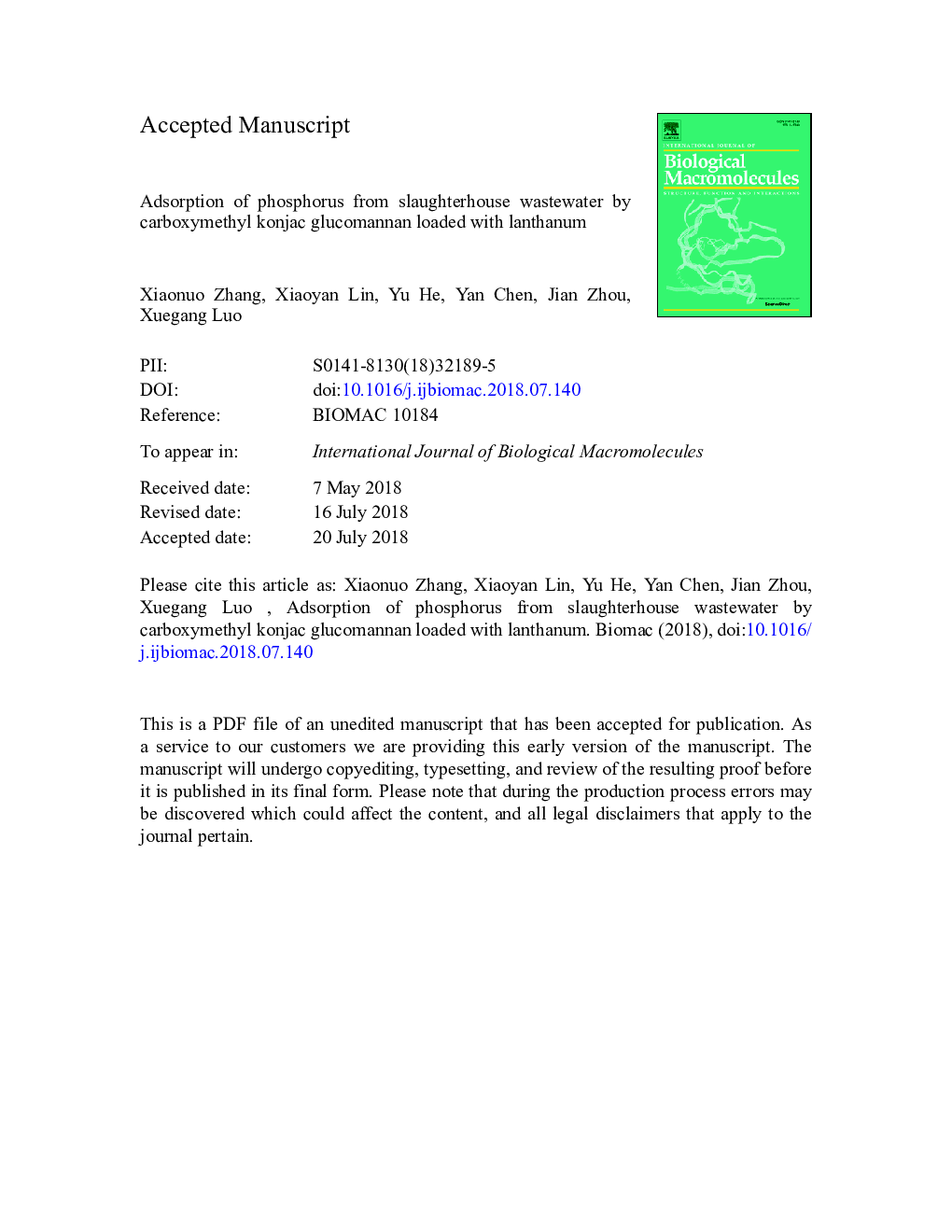| Article ID | Journal | Published Year | Pages | File Type |
|---|---|---|---|---|
| 8326657 | International Journal of Biological Macromolecules | 2018 | 44 Pages |
Abstract
Phosphorus removal was an important measure in the control of eutrophication of water environment. In this study, a novel phosphorus removal adsorbent of lanthanum-loaded carboxymethyl konjac glucomannan microspheres (CMKGM-La) was successfully prepared by the method of electrostatic spraying and sol-gel, and was characterized by SEM, XPS and EDX. Batch experiments were performed to evaluate the adsorption capacity at different conditions: pH, temperature, initial concentration, adsorbent dosage and contact time. The results showed that the adsorption kinetics data correlated well with the pseudo-second-order kinetic model and the adsorption isotherm was well described by the Langmuir isotherm model with the maximum capacity of 16.06â¯mg·gâ1 for CMKGM-La microspheres at pH of 4 and 318.15â¯K. The adsorption of phosphorus was a spontaneous, entropy-increasing and endothermic process. The possible adsorption mechanism of phosphorus on the CMKGM-La microspheres consisted of the coordination reaction of La (III) with phosphorus and electrostatic attraction between protonated hydroxyl and phosphorus. The presence of co-existing ions (such as NH4+, Clâ, SO42â, SiO32â and CO32â) had no significant effect on phosphorus removal. These results suggested that the adsorbent of CMKGM-La microspheres was a promising adsorbent for the removal of phosphorus from slaughterhouse wastewater.
Related Topics
Life Sciences
Biochemistry, Genetics and Molecular Biology
Biochemistry
Authors
Xiaonuo Zhang, Xiaoyan Lin, Yu He, Yan Chen, Jian Zhou, Xuegang Luo,
